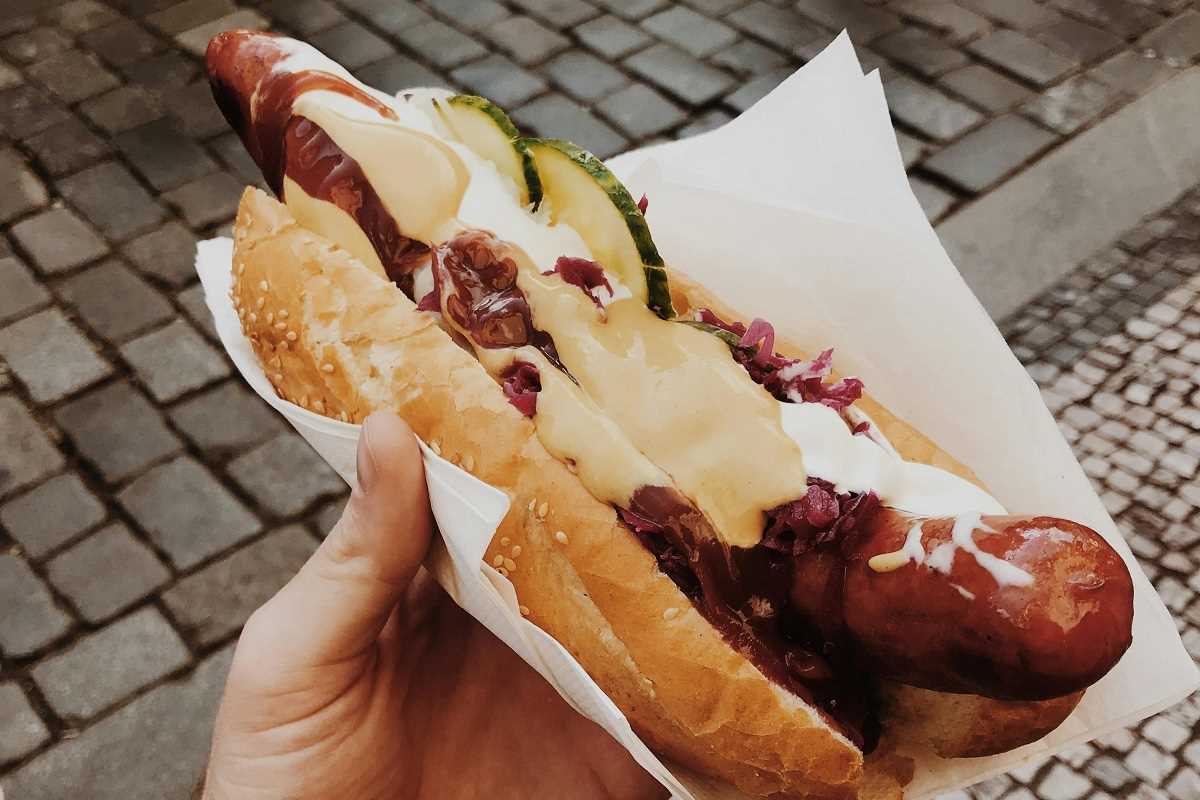Street food is much more than a meal—it's a reflection of a region’s culture, history, and the creativity of its people. Whether you're wandering through the bustling night markets of Bangkok or sitting in a cozy corner of Rome’s Trastevere district, the diversity and flavors of street food can offer a window into the heart of a destination. For food lovers, exploring street food is one of the most authentic ways to experience the essence of a place. In this guide, we’ll take you on a culinary journey around the globe, highlighting some of the best and most beloved street food dishes that define each region.
Asia: A Melting Pot of Flavors
Asia is home to some of the most vibrant and diverse street food cultures in the world. From the tropical heat of Southeast Asia to the cold, refined street food of Japan, every country has something unique to offer.
- Thailand: Street food in Thailand is a cornerstone of daily life, and Bangkok is arguably the epicenter of the country's street food scene. The best way to experience the city’s street food culture is by hopping between different food stalls in neighborhoods like Sukhumvit or Yaowarat (Chinatown).
- The iconic Pad Thai, a stir-fried noodle dish, combines shrimp, tofu, peanuts, bean sprouts, and a zesty lime wedge, making it an explosion of flavors.
- Another must-try is Som Tum, a spicy green papaya salad with a mix of chili, fish sauce, lime, and peanuts—its combination of sweet, sour, salty, and spicy is something you’ll crave after the first bite.
- India: In India, street food is more than just a quick bite—it's a way of life. Every region has its own unique offerings that reflect the diversity of Indian cuisine.
- Vada Pav, a spiced potato patty served in a bun, is a beloved snack in Mumbai, often enjoyed with chutneys or fried chili.
- For a hearty breakfast or lunch, Chole Bhature from Delhi, consisting of spicy chickpeas paired with deep-fried flatbread, is a soul-satisfying meal.
- Pani Puri, crispy hollow shells filled with spicy water, tamarind, and chickpeas, is an unforgettable experience for your tastebuds. These small bites are perfect for a late-night indulgence, as street vendors often sell them well into the night.
- Japan: Japanese street food is an intricate mix of traditional and modern influences, and it's often centered around street stalls or food markets.
- Osaka, known as Japan's kitchen, is famous for Takoyaki—fried dough balls stuffed with pieces of octopus, drizzled with a savory sauce and sprinkled with bonito flakes. It's crispy on the outside, soft and gooey on the inside.
- In Hiroshima, the Okonomiyaki is a savory pancake made with cabbage, pork, seafood, or cheese, topped with a tangy sauce and mayonnaise. It’s often cooked in front of you, adding to the experience of street dining.
Europe: Traditional Tastes with a Twist
European street food is deeply rooted in tradition, but many cities have modernized their street food scene with fresh takes on time-honored recipes. In the busy squares of Rome, the narrow streets of Barcelona, or the beer gardens of Berlin, you’ll find diverse and satisfying options to taste.
- Italy: Italy’s street food culture reflects the country’s rich culinary history.
- In Rome, Suppli—rice balls stuffed with mozzarella and deep-fried—are a popular snack. The gooey cheese inside and the crispy rice coating make this a must-try treat for any food lover.
- In Sicily, Arancini, larger rice balls often filled with ragù (meat sauce), peas, or even pistachio, are popular. These are more than just a snack; they represent the island’s rich agricultural roots and its Mediterranean influences.
- Spain: Spain is famous for tapas, but its street food goes beyond small bites.
- Churros con chocolate, a sweet Spanish dessert, consists of fried dough sticks that are crunchy on the outside and soft on the inside, often served with a cup of thick hot chocolate for dipping.
- For savory fare, try Pintxos from the Basque Country. These are small, open-faced sandwiches topped with everything from chorizo to anchovies, olives, or small pieces of meat. They're usually speared with a toothpick and eaten quickly, often paired with a glass of txakoli (Basque white wine).
- Germany: When you think of German street food, think hearty, comforting, and satisfying.
- One of the most iconic street foods in Berlin is Currywurst—a grilled sausage sliced into pieces and smothered in a tangy curry ketchup, often served with fries. It’s a dish that perfectly represents the city’s post-World War II culture, born out of a need for something cheap, filling, and delicious.
- For dessert, you can try Berliner—a German doughnut filled with jam, perfect for a sweet treat while strolling through Berlin's bustling streets.
The Americas: Fusion and Innovation
In the Americas, street food tends to be a delicious mix of cultures, reflecting the diversity and melting pot of influences from all over the world. From the food trucks of New York City to the vibrant street food scene in Mexico, there’s something for every palate.
- Mexico: No discussion of street food is complete without Tacos. Found in every corner of Mexico, tacos are simple but packed with flavor.
- From carnitas (slow-cooked pork) to al pastor (marinated pork with pineapple), tacos are often topped with cilantro, onion, and a squeeze of lime, offering a perfect combination of smoky, tangy, and spicy.
- If you’re craving something a little different, try Elotes, grilled corn on the cob slathered in mayonnaise, chili powder, cheese, and lime. It’s a popular street snack that brings together the flavors of sweet, savory, and spicy all in one bite.
- USA: Street food in the United States is incredibly diverse, thanks to the country’s melting pot of cultures.
- In New York City, food trucks serve everything from gourmet burgers to creative falafel wraps. One of the standout creations is the Korean BBQ taco—a fusion of Korean marinated meats (like bulgogi) and Mexican tacos.
- In Los Angeles, the food scene is just as diverse, with tacos, ramen, and even vegan delicacies offered from food trucks parked throughout the city.
- Brazil: Brazil offers an incredible array of street food, from sweet to savory.
- In the northeastern city of Salvador, Acarajé—a deep-fried ball made from black-eyed peas and filled with vatapá (a spicy shrimp paste)—is a beloved street food. This dish reflects the African influence on Brazilian cuisine and is often enjoyed with a cold beer on hot summer days.
- In Rio de Janeiro, Pão de Queijo, or cheese bread, is another favorite snack—chewy, cheesy, and gluten-free. It’s enjoyed by locals and visitors alike.
Africa: Rich and Diverse Culinary Heritage
African street food is as rich and diverse as the continent itself. Street vendors across Africa serve dishes that highlight the unique flavors and ingredients of their regions. Whether you’re in the bustling markets of Morocco or the sunny streets of South Africa, the experience of sampling African street food is unlike any other.
- Nigeria: One of the most iconic Nigerian street foods is Suya, skewers of spicy, grilled meat (usually beef or chicken) served with onions, tomatoes, and spicy pepper sauce. The flavors are bold and smoky, and it’s often enjoyed with a cold drink as a perfect way to start or end the day.
- South Africa: Bunny Chow, a unique street food from Durban, involves a loaf of bread hollowed out and filled with curry, usually chicken or mutton. The combination of soft bread and spicy curry is deliciously satisfying. The origins of bunny chow can be traced back to the Indian laborers who worked there, and it’s a delicious representation of South Africa’s multicultural influences.
- Morocco: In Marrakech, the Merguez sausage, a spicy, flavorful sausage often served in a sandwich or with couscous, is a street food favorite. The sausages are typically made from lamb or beef and are flavored with garlic, cumin, coriander, and chili, creating a robust, smoky taste.
Tips for Enjoying Street Food Safely
- Observe the Crowd: Choose vendors that are popular with locals. High turnover often means fresher ingredients and a cleaner cooking environment.
- Check the Hygiene: Inspect food stands for cleanliness. Vendors who maintain clean cooking conditions are more likely to take proper care when preparing their meals.
- Eat Freshly Cooked Items: Opt for food that’s prepared to order. Freshly made food is less likely to have been sitting around too long.
- Stay Hydrated: Carry bottled water, particularly if you consume spicy dishes or explore hotter regions.
Finally, be Adventurous, but Cautious. Don’t shy away from trying new foods, but keep an eye on dietary restrictions or allergies. It’s always wise to be mindful of what you’re eating.
 (Image via
(Image via





